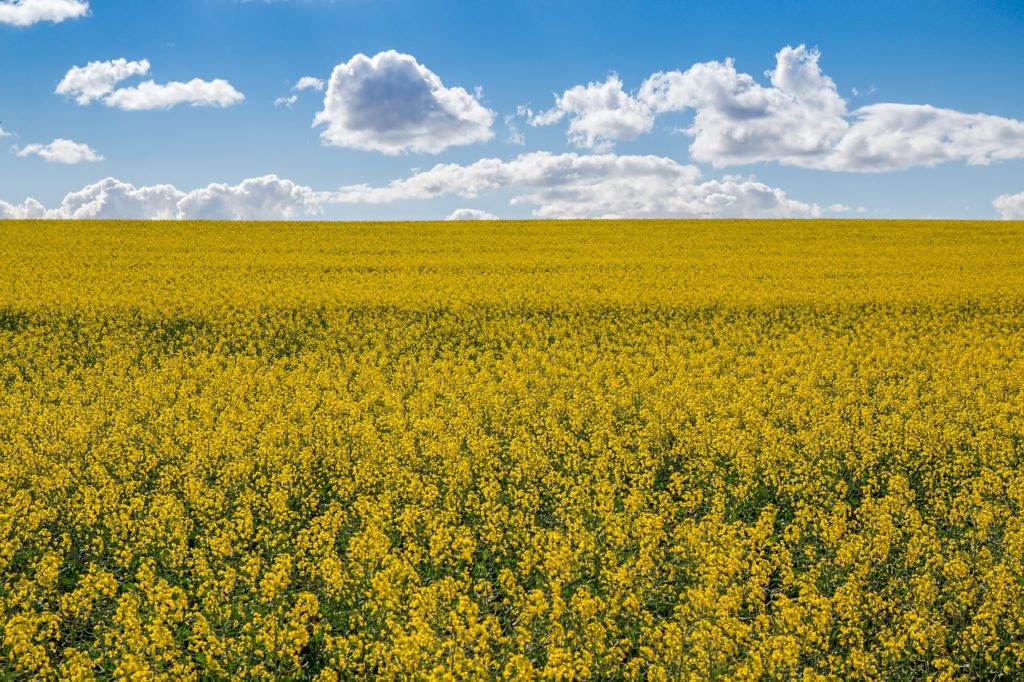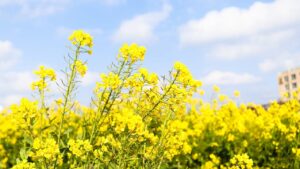Agriculture and Agri-food Canada research scientist Isobel Parkin helped crack the genetic code for canola and she continues to be on the cutting edge of genome sequencing for brassica plant species.
Isobel Parkin is one of the world’s premier canola scientists, with an impressive resume that includes helping to decode the genome of canola as well as other brassica species.
It’s no surprise then that Parkin, a molecular genomics specialist with Agriculture and Agri-Food Canada based in Saskatoon, Sask., is highly respected among her colleagues. Sally Vail, a fellow AAFC research scientist who has collaborated with Parkin on numerous projects, is certainly one of them.
“Isobel is a world-leading expert in her area, and she is a great person to work with,” Vail says. “I look at her as a mentor, and I don’t think I’m the only one that does. The canola industry is really lucky to have her working on brassicas.”
Vail is a canola breeder and genetics researcher who, like Parkin, works at AAFC’s Saskatoon Research and Development Centre. She says her colleague’s keen grasp of genomics and its potential for transforming plant breeding was something that impressed her from the start.
“One of the things that really struck me when I first started to work with Isobel was the breadth of her understanding in terms of being at the cutting edge of genomics, but then really being grounded in terms of understanding plant breeding programs and what’s needed in the way of tools and what has to be developed,” Vail says.
Early Genetic Mapping
Parkin was born in the United Kingdom and earned a PhD in genomics from the John Innes Centre, a renowned research hub for plant science, genetics and microbiology located in Norwich, England, before moving to Canada and taking on a position with AAFC 23 years ago.
“I was quite lucky when I started off because I was involved in some of the very early genetic mapping in canola,” says Parkin, who was recruited in the late 1990s to co-lead a project called the Canadian Canola Sequencing Initiative (CanSeq) along with Andrew Sharpe with the Global Institute for Food Security at the University of Saskatchewan.
Parkin and the CanSeq team were part of an international consortium of public and private scientists that in 2014 announced it had successfully deciphered the complex genome of canola, or Brassica napus.
The complexity of the B. napus genome can be attributed to its origins a few thousand years ago, when the first plants developed from unintentional crosses between European cabbages and Asian turnips.
Unlike many other plants, B. napus canola has retained almost all of the genes of its two parental species. The canola genome has more than 100,000 genes, one of the highest gene densities of any sequenced organism. By comparison, the human genome contains around 30,000 genes.
Parkin and her research team played an important role in the cracking the B. napus genome code by helping to sequence the progenitors of canola and then helping place together all the pieces of what amounted to an extremely intricate puzzle.
“I’ve always been interested in genetics, looking at the inheritance of things, how plants evolve and get from one place to another, and the relationships between species. It’s all very fascinating in a way,” says Parkin.
“A lot of what we do is searching for patterns, trying to identify how things relate to each other. You’re trying to put puzzles together, work out where you see similarities and differences,” she adds.
“The tools that have become available to do this kind of analysis have just developed so rapidly, especially in the last 10 to 15 years. They just give us so much more access to the genome and allow us to understand it in a way that we couldn’t before.”
Parkin notes that sequencing results published by the international consortium pertained to a winter type of canola, which is generally grown in Europe.
“Everything we grow here in Canada is a spring type canola, so we actually sequenced our own Canadian version of the genome as well,” she says.

Camelina Genome
Parkin also led a Canadian public-private research team that in 2016 published its results on successfully sequencing the genome of another brassica species, camelina. It is an ancient European oilseed crop that’s finding newfound popularity as a feedstock for bioproducts such as plastic and also as a protein-rich food for fish and livestock.
Camelina oil, which last year was approved by the Canadian Food Inspection Agency as an alternative feedstock in the aquaculture industry, could hold some promise for Canadian agriculture since it can be produced on marginal lands with significantly lower inputs than other oilseeds such as canola.
Parkin continues to work in the area of camelina, and recently collaborated with AAFC molecular biologist Dwayne Hegedus and researchers from Dalhousie and Memorial universities on a project that examined the potential use of camelina meal protein and oil in farmed fish diets. The research showed that camelina oil is sufficiently nutritious to replace all the fish oil in fish feeds, as well as some of of the fish oil in ground fish meal.
Parkin notes that decoding the genome for camelina took much less time than it did for canola, largely because of improvements in DNA sequencing technology.
“That genome took only about a year, actually. It was lot faster because the technology has changed so much of the time,” she says. “Nowadays, things are even quicker. We can sequence genomes in a few months.”
Parkin points out that while the cost of genetic mapping has also dropped dramatically, the amount of data that can be generated by sequencing techniques has increased exponentially — creating new challenges for genomic researchers.
“The main limitation right now is probably computational. You can generate so much sequence data, but you have to have the computational processing power to be able to analyze it, and then also the storage space to store all this data,” she says.

Agronomic Improvements
Parkin believes that unravelling the complexities of genome sequences provides plant breeders with invaluable knowledge about making agronomic improvements to the crop. Not only can they be more specific and focused in terms of the traits they’re looking to develop, she says, but they’re now able to perform this work in much less time.
“The idea now is to identify the most significant markers across the genome and then develop tool kits for plant breeders that allow them to allow to look at those genetic markers,” says Parkin.
“The issue with any breeding processes is that you have to manipulate multiple regions of the genome at the same time. That’s why markers and genome sequences are really of value,” she adds.
“You can manipulate multiple traits and select for whatever it is you want at the very early stages, and then those are the ones you put in the field,” Parkin says. “It’s cutting out years from the breeding program because of these selection methods.”
Beyond her sequencing work in canola and camelina, Parkin has more genetic mapping achievements to her credit. The work performed by Parkin and her AAFC team on sequencing the Brassica nigra or black mustard genome was published in the scientific journal Nature Plants this year and they are set to release their genome sequencing results for another species in the bassica family, Sinapis alpa or white mustard.
“All of these genome sequences, they have an informational interest, but they also have an important applied use and that is being able to access genes,” she says.
Parkin says the ultimate goal of her genomics work is to improve the lot of farmers.
“I am upstream at the very early stages, but I do work closely with the breeders to ensure that what we’re targeting in the long term is going to be of value. That’s always been the aim,” she says.
“At Ag Canada, our basic goal is to try and do work that makes life easier for producers and increases their margins in the long run. Everything we do is predicated on that.”











